Na zelf even zoeken kwam ik op het volgende: http://en.wikipedia.org/wiki/False-collar.
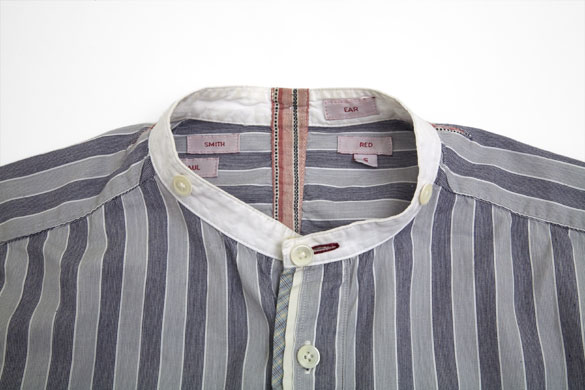
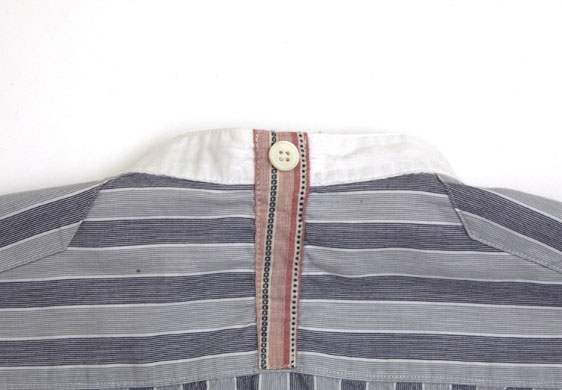
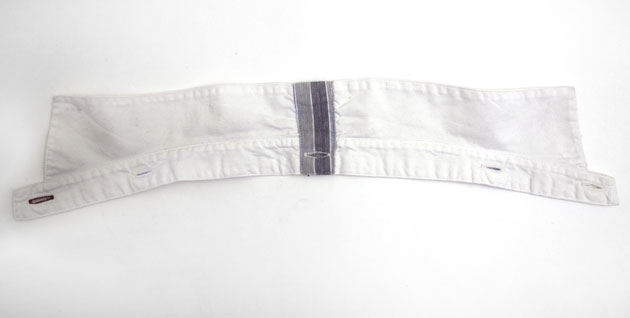
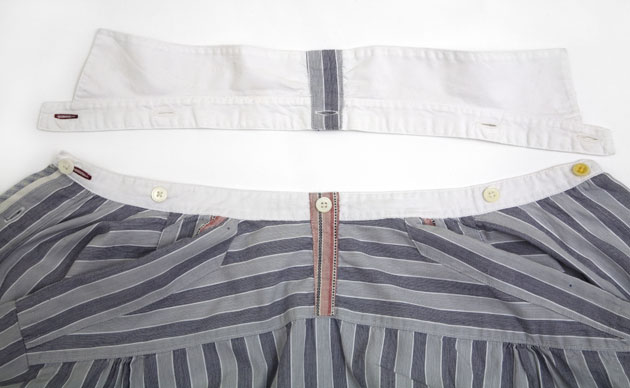
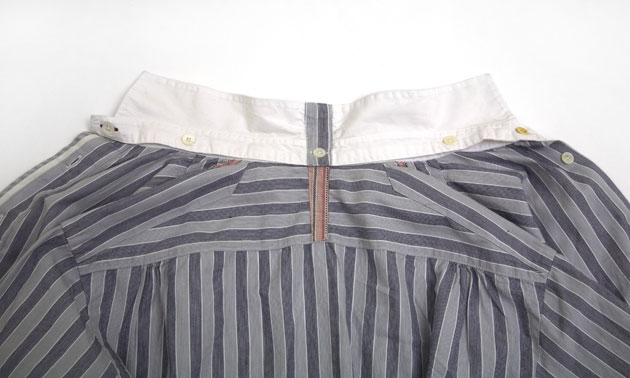
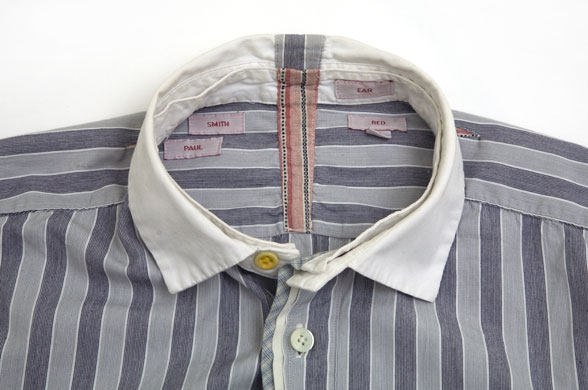 A General History Of Detachable Collars On Custom Made Business And Formal Shirts
A General History Of Detachable Collars On Custom Made Business And Formal ShirtsYou may remember the television commercial of old that shows a women yelling - "ring around the collar" - in which she uses a detergent to wash out the grime from her husband´s shirt and collar.
Ring around the collar isn´t simply a Madison Avenue executive´s clever ploy to sell washing detergent. It´s a centuries old problem and more than 150 years ago a Troy women set out to do something about it. However, she had not planned on creating a whole new industry.
Hannah Lord was the daughter of William A. Lord, a Revolutionary War officer and author of Lord´s Military Tactics. She married Orlando Montague, a shoe maker (or blacksmith), on August 14, 1817, and both settled in Troy originally on Second Street.
Mrs. Montague, tired of washing her husband´s shirts because only the collars were dirty decided one day to snip off a collar, wash it, and sew it back on. Mr. Montague, it´s written, agreed to the experiment, and in 1827, the first detachable collar was made at their home at 139 Third Street.
Notice of the event spread through the city and the Rev. Ebenezer Brown took notice. Brown, who was formerly a Methodist Minister, then the owner of a small shop at 285 River Street, was asked several times for the new product that was buzzing around the streets of the city.
Brown saw the need and rushed to fill it. His wife and daughter began cutting, stitching, and laundering the first detachable collars, consisting of 2 ply material, which had to be taped and tied around the neck. These early collars were called "string collars" and cost 25 cents a piece, of two dollars per dozen. Brown would sell and deliver the collars door to door.
His popularity forced him to set up a workshop in the back of his store where he hired several women to do the job, and also outsourced the work. Payment for their labor was in the form of "trade" in his store, and set by his own price. This may have been the first "sweat shop." Brown eventually moved to New York City in 1834.
Orlando Montague, the first person to wear a detachable collar, soon began his own collar factory with business partner Austin Granger in 1834. The Montague & Granger collar factory began at 222 River Street. Besides improving on the string collar, they developed the "Bishop" collar, an upright modification of the turn down collar. Besides collars, they manufactured "dickeys" (detached shirt bosoms), and separate cuffs.
Detachable collars had the problem of leaving gaps between the shirt and collar and this led to the invention of the use of buttons to snap the collars in place. This also led to the development of several new designs of collars.
The original reason that Mrs. Montaque created the detachable collar was to clean it separately from the shirt. With the increase production of collars came the need to wash the thousands of collars being produced. In 1835, Independence Starks, entered the collar making business, and also created the first Troy Laundry at 66 North Second Street (Fifth Avenue today) where he washed not only his own collars but those of competitors as well. Many years later the laundry industry would spark the creation of the first female union in the country.
For the next 50 years many inventions were developed to aid the collar, cuff, and shirt industry and Troy production boomed. By the late 1880´s, detachable collars were being manufactured around the nation.
By the early 20th century, 15,000 people worked in the collar industry in Troy and more than 85% were native born women. Ninety out of every 100 collars worn in America were made here and Troy became world famous as the "Collar City."
In 1901, there were 26 collar and cuff makers and 38 laundries in the city. Wearing a detached white collar gave rise to a new working social class, the "white collar" worker who differentiated themselves from the no or "blue" collar factory worker.
By 1962, only six companies were still making collars and cuffs in Troy and by the 1970´s most had gone out of business or moved South.
Marvin Neitzel Corp, a firm that currently manufacturers nurses uniforms, is the last existing firm which has collar roots. Marvin Neitzel Corporation goes back to 1886 when E. W. Marvin joined the collar firm Gunnison & Son, making it Gunnison & Marvin, later incorporating in 1908 as E. W. Marvin Company. Raymond P. Neitzel joined the firm in 1917 to develop a full line of hospital products and the firm became Marvin Neitzel Corporation in 1931. Marvin Neitzel Corp is the last company to make collars in Troy, ceasing production only a few years ago.
by G. Bruce Boyer